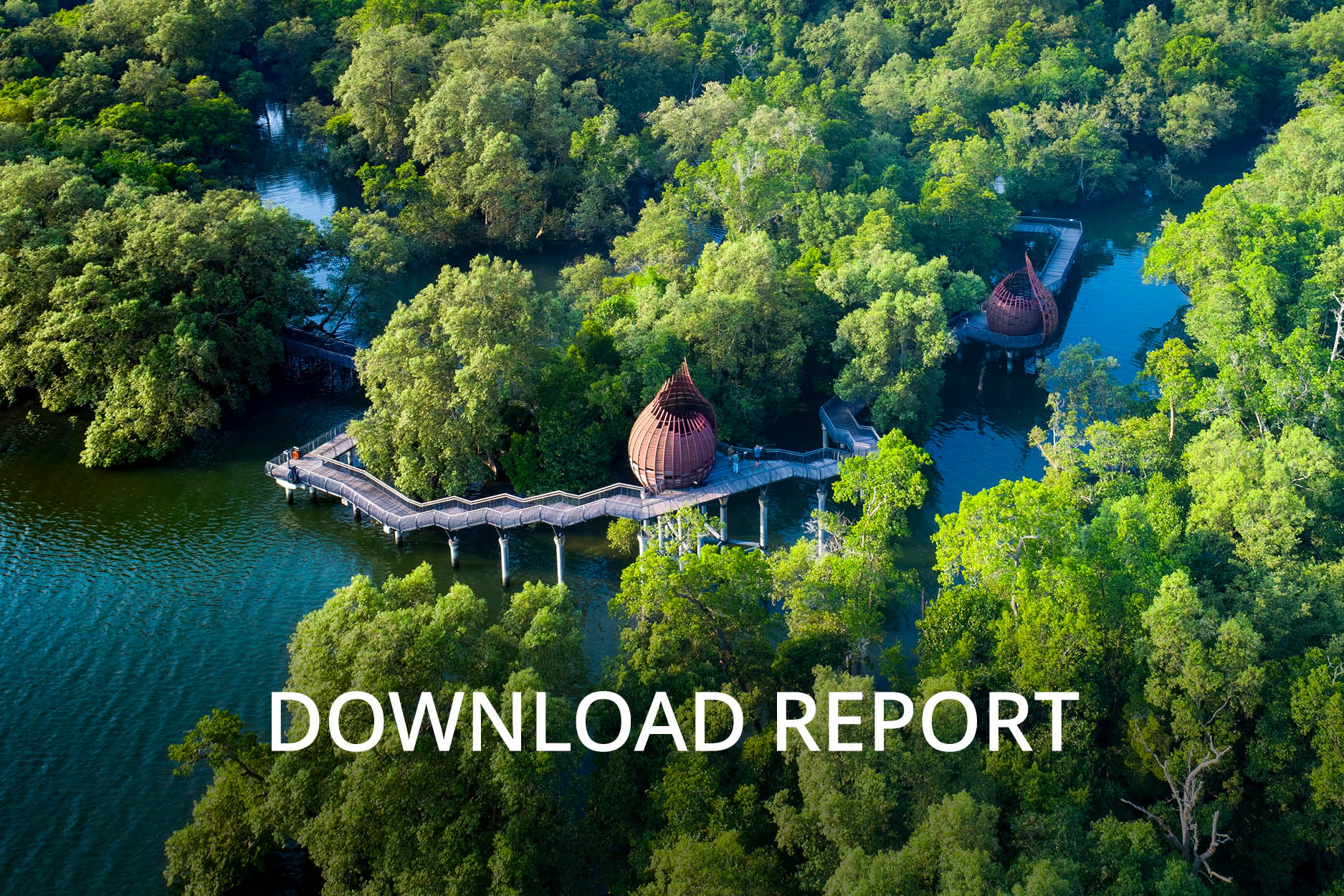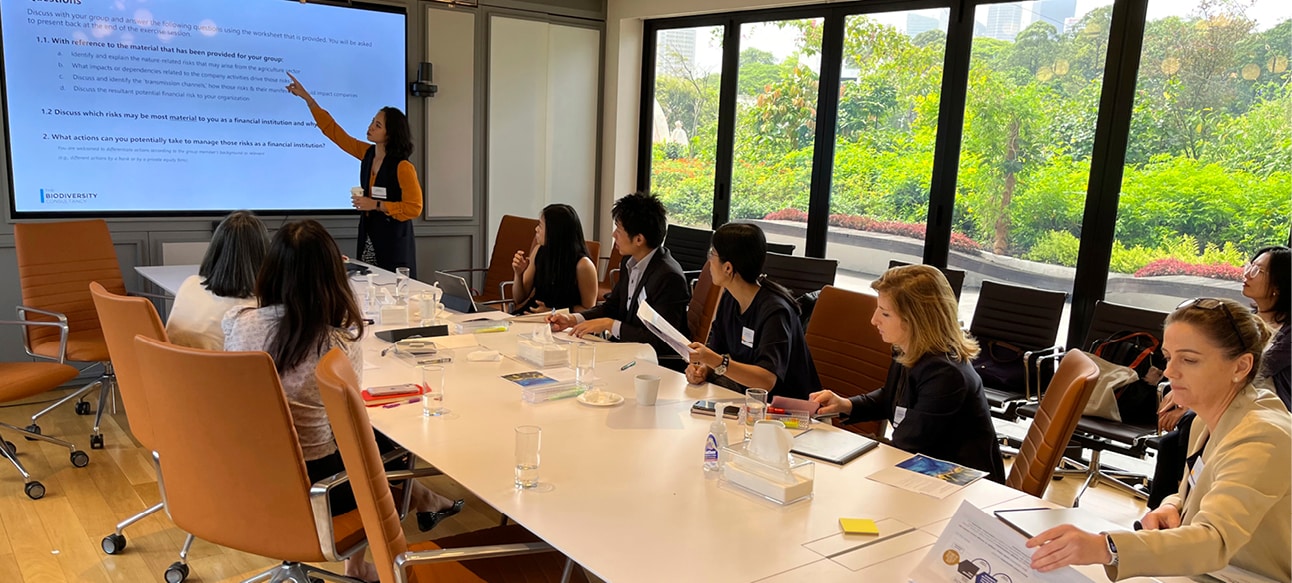Embedding ESG as Part of Our Investment Process
Generating sustainable returns over the long term depends on stable, well-functioning, and well-governed social, environmental, and economic systems. The decisions we take today, as an asset owner, will impact future generations.
We have integrated an Environmental, Social, and Governance (ESG) framework across our investment process from pre-investment due diligence to post-investment engagement. This enables us to better manage material risks and engage our portfolio companies to advance ESG practices to strengthen portfolio resilience and alignment with our sustainability objectives.
We believe companies that recognise the importance of ESG factors and manage them effectively are better positioned to navigate risks and generate sustainable value over the long term. Thus, we evaluate sustainability-related risks and opportunities across our investments through our ESG framework, which also integrates climate change and supports our net portfolio carbon emissions target.
Our ESG framework centers around the idea of continuous improvement. ESG integration helps us identify material issues that can affect the companies’ performance and impact the environment, the workforce and societies at large – be it through the products and services they offer or through the practices they apply in their operations.
It is designed to help:
- expand opportunity sets in businesses that generate positive environmental or social impacts through their products or services;
- advance ESG practices through pre-investment diligence and post-investment engagement with portfolio companies;
- manage exposure to companies that have the potential to cause negative environmental or social externalities;
- avoid investing into companies in restricted industries.
Our approach is rooted in our broader governance model, according to which we hold the boards and management of our portfolio companies accountable for the activities of their companies, but do not direct their day-to-day business decisions or operations. We protect our interest by exercising our shareholder rights, including voting at shareholder’s meetings.
This broader framework is supported by various tools that help us in the day-to-day investment decision-making. One example is a restricted industries list that defines which business activities fall beyond the scope of our investment focus based on considerations around obligations under Singapore laws and regulations, including those arising from international treaties and UN sanctions or our assessment of the broader implications of the products or services on society. Another example is a set of internal guidelines that specify the conditions and necessary safeguards for investments in sectors and business activities with more inherent risks of negative impacts on the environment, workforce, or society.
Similarly, we leverage tools such as our Climate Transition Readiness Framework and ESG Value Creation Playbook to support our post-investment engagement efforts. Through this process, we encourage portfolio companies to understand and manage climate- and sustainability-related risks, focus on continuously improving operational practices, and where possible, seize opportunities to build competitive advantage, for example, by expanding business involvement in sustainability-focused products or services.

At Temasek, we integrate ESG into the core of our investments, from pre-investment due diligence to post-investment engagement. As a long-term investor, this goes hand in hand with ensuring the long-term resiliency and future-proofing of our portfolio.
– Kyung-Ah Park, Head, ESG Investment Management, Managing Director, Sustainability, Temasek
Navigating the ESG Complexities in an Investment Decision: A Case Study
Video gaming has experienced significant growth in recent years with hundreds of millions of players globally engaging in various digital platforms and games on a daily basis. Gaming can have positive and negative effects in the areas of social interactions, cognition, and mental agility. Gaming can be an effective way to improve critical thinking, problem solving skills, and peer engagement. At the same time, there are social and health risks associated with prolonged exposure to gaming, including repetitive stress or overuse injuries as well as gaming addiction.
We gained a more nuanced understanding of the various ESG topics material to the industry as we evaluated an investment in an online videogame platform, which allows users to create games and to play games created by users. The business model of the company enables developers to earn a share of the platform’s revenue based on the number of visits and engagement their games receive.
Beyond traditional issues associated with online video gaming, such as the potential for gaming addiction, data privacy and protection, energy consumption, and fair and ethical business practices, the community-driven approach of the platform posed additional risks to online safety (and child safety in particular given the audience of the platform), including offensive or harmful content, cyberbullying, and scams being generated or propagated by users.
We conducted extensive diligence to understand the potential risks as well as the maturity and robustness of the company’s policies, practices, and safeguards against them. This included interviews with senior executives across key functions, discussions with experts, and research and insights leveraging data science approaches. In our dialogue with the company’s management, we discussed the findings of our diligence and established a shared understanding of the critical mitigants to foster a safe and secure environment for all players, including: content moderation, parental controls, platform restrictions, IP protection, and data privacy and practices. The maturity of the company’s practices as well as the level of resources the company devotes to stay ahead on these issues, the proactive innovation approach they deploy to continuously improve their practices, as well as their constructive partnerships with law enforcement agencies and child safety advocacy groups, provided us with comfort to proceed with the investment.
Working through these various aspects allowed us to acquire substantial knowledge on best industry practices and critical safeguards. We continue to leverage these insights in our post-investment monitoring and engagement. Furthermore, we have harnessed and translated these insights into an internal guideline on online safety which will further inform our ongoing diligence efforts as we evaluate digital businesses.
Pre-Investment ESG Due Diligence
The ESG analysis forms an integral part of the overall investment analysis for all investment proposals.
During deal evaluation, our investment teams employ a broad-based research approach to assess material company-level ESG considerations, performance against peers in the respective industry, as well as forward-looking sustainability trends that are likely to affect the business and its competitive positioning.
To support the diligence process for investments in industries and business activities with known negative environmental and/or social externalities, such as businesses involved in fossil fuels, transportation, and agriculture, we have developed internal guidelines that specify the safeguards and necessary mitigants that need to be in place. Enhanced diligence on such investments is required and these investment opportunities can only be pursued when there are clear plans in place to mitigate and address the identified negative externalities.
The analysis prepared by our investment teams is supported by a suite of ESG tools, a team of dedicated ESG professionals, and, where appropriate, external advisors. Key insights and findings are incorporated into the overall investment assessment for review and approval by the relevant investment committees.
In-depth Focus on Climate
Given the severity and potential short- and long-term impacts of climate change across industries, climate change is a material consideration in all our investments. Therefore, our ESG framework mandates climate analysis for all new investments that are evaluated by the relevant investment committees, examining the following issues:
- Potential portfolio company’s contribution to climate change through its carbon footprint;
- Effects of climate change on the company’s operations or commercial prospects, arising from physical and transition risks;
- Any potential new opportunities arising from technology innovations, government regulations, as well as evolving customer needs.
As part of our transition risk analysis, we consider how the prospective portfolio company might be impacted by policy, legal, technology, and market changes associated with the transition to a low-carbon economy, considering the product portfolio and the company’s strategic positioning. An internal carbon price (ICP) is applied to each investment to better assess the potential climate transition impact.
In addition, we utilise a range of point-in-time and forward-looking metrics and approaches, including:
Carbon Metrics
- Total Carbon Emissions
Absolute greenhouse gas (GHG) emissions (Scope 1 and Scope 2), expressed in tCO2e. - Carbon Intensity
Absolute GHG emissions (Scope 1 and Scope 2) per million dollars of market value, expressed in tCO2e/S$M market value. - Carbon Efficiency
Absolute GHG emissions (Scope 1 and Scope 2) per million dollars of revenue, expressed in tCO2e/S$M revenue. - Carbon Spread
Proprietary metric which reflects our ICP modelled as a spread on top of our risk-adjusted cost of capital, thereby acting as a trigger for deeper analysis into the investee’s climate transition and decarbonisation plans.
Climate Value Impact Assessments
We estimate the potential impact on equity value of individual assets under specific climate scenarios using a third-party climate modelling tool. We take into consideration factors such as price elasticity, cost pass-through, and Scope 3 emissions.
We also review potential exposure to physical climate risks, including acute and chronic climate hazards. We assess potential impacts of these risks on the company’s physical assets, operations, and where relevant, critical supply chains. We do so taking into account existing or planned mitigation efforts.
Spotlight on Temasek’s Internal Carbon Price (ICP)
Temasek set an initial ICP of US$42 per tCO2e in 2021 to embed the cost of carbon in our investment and operating decisions, and to further align our portfolio and business to our net zero target. This was subsequently increased to US$50 per tCO2e in 2022 and again to US$65 per tCO2e in 2024, with a view that the carbon price may reach US$100 per tCO2e by 2030. Review of the ICP is performed every two years and takes into account the carbon price projections by international bodies.
Our ICP serves various purposes. It not only informs our transition risk analysis, thereby strengthening portfolio resilience but also helps us build a forward-looking portfolio in alignment with the global ambitions for net zero. Furthermore, our ICP has been incorporated into various internal management tools in an effort to align our institutional practices, and encourage climate-aligned decisions and behaviour among our employees.
| Objectives | Related use cases | |
| Portfolio Resilience | Appropriately identify and account for transition risk in investment decisions to ensure acceptable exposure at asset and portfolio level |
|
| Portfolio Alignment | Increasingly align our portfolio to help meet our net carbon emissions target of half the 2010 levels by 2030 and net zero carbon emissions by 2050 | |
| Institutional/ Ecosystem Alignment | Encourage behaviours and outcomes across the organisation that lead to progressive emissions reductions |
|
As part of our efforts to build long-term resilience across the portfolio and also drive opportunities for value creation, we assess potential climate-related opportunities, such as the development of new products and services, expanding access to new markets, enhancing supply chain efficiencies and resilience, and driving resource efficiencies and cost savings.
Social Baseline Expectations
To further strengthen our core process of diligence for industry relevant social factors, we developed and piloted a set of cross-cutting Social Baseline Expectations in 2023. This consists of a set of core business practices related to social issues that we expect investment targets and portfolio companies to adopt in their own operations, supply chains, and stakeholder interactions. Topics include human rights and labour practices, diversity, equity, and inclusion, talent management, product quality and safety, data privacy and security, and supply chain responsibility.
As part of the due diligence pilot, we evaluated potential investments against these expectations. This enabled the identification of material potential social risks. Where a company did not meet all baseline expectations, we conducted more in-depth assessment where applicable to determine the nature and severity of the gaps. We remain responsive to emerging social risks hotspots such as responsible Artificial Intelligence, enhancing our institutional knowledge, and strengthening our investment teams’ capability through the development of in-depth guidelines and toolkits.
Material Nature Considerations
The evaluation of nature-related dependencies and impacts already forms part of our diligence for sectors with relevant exposure. We are advancing our efforts to enhance our pre-investment diligence process, deepening our ability to more systematically identify, and, where possible, quantify material nature-related risks. In particular, we are exploring several potential avenues, including:
- Establishing a nature risk assessment tool to help identify potential investment assets that are located within proximity to key biodiversity areas or protected areas. This will allow us to focus specific diligence efforts on investments with high exposure to nature-related risks.
- Expanding our specific diligence guidance toolkits to cover sectors with material dependency and impact on nature.
Governance Considerations
Good corporate governance is fundamental to a well-managed company and demonstrates trustworthiness and resilience. It is also an indicator of a company’s commitment to conduct business with integrity in a sustainable manner. As part of our due diligence process, we consider the policies and procedures companies have established and implemented to govern their organisation, and to ensure transparency and accountability regarding corporate activities. Where material, we seek to understand a company’s oversight of ESG and climate policies, procedures, and practices, stakeholder engagement, reporting on human rights and environmental due diligence, as well as their efforts to remain up-to-date and compliant with changing regulations.

Our exposure to the Sustainable Living Trend is steadily growing as we see more innovation and significant opportunities in this space. There is no doubt that if we don’t invest in businesses that are aligned with sustainability principles, it is going to be very difficult to sustain returns because there are no long-term trade-offs between the two.
– Rohit Sipahimalani, Chief Investment Officer, Temasek
Portfolio Monitoring
We track and monitor sustainability-related risks and performance at both the portfolio and investment level, through the following activities:
ESG Risk Monitoring
We provide annual updates to the Board and senior management on key ESG risk areas including our involvement in industries with heightened ESG exposures, external ESG ratings across our listed portfolio as a data point from an outside-in perspective, ESG incidents and controversies, key performance indicators (including portfolio carbon emissions and carbon metrics), and material ESG issues.
In addition, we utilise a third-party climate modelling tool to monitor climate-related risk at the asset level for our listed portfolio and significant unlisted holdings. We evaluate exposure under certain scenarios and pathways which are consistent with those used in our portfolio-level scenario analysis. Where critical risks are identified, they are escalated on a case-by-case basis as required.
Carbon Budget
We have set GHG emissions budgets for each sector and market investment team to ensure that teams are managing their respective investment’s contribution towards the overall portfolio emissions target.
Portfolio Carbon Analytics and Reporting Tool
We created and utilise an in-house measurement, reporting, and analytics tool with sector and market dashboards to help relevant teams track and monitor the carbon emissions of their investment portfolio.


